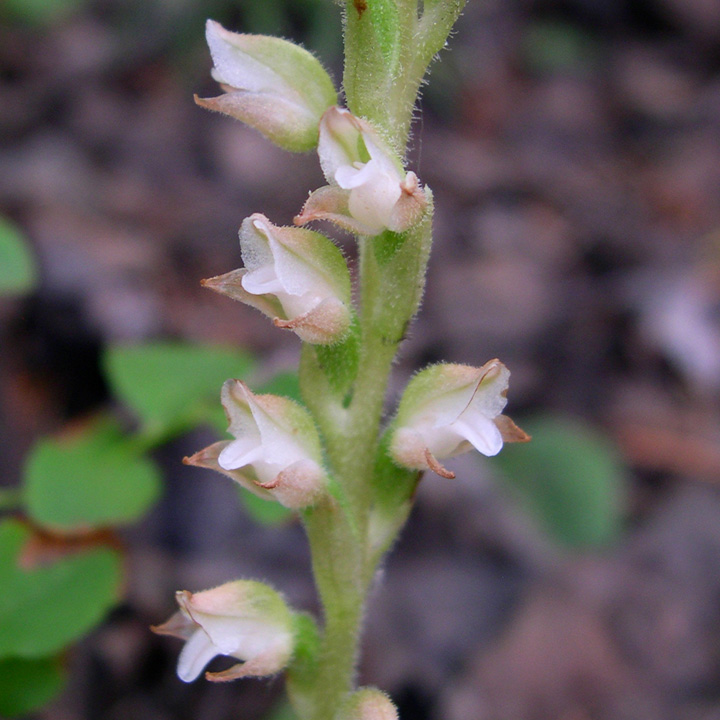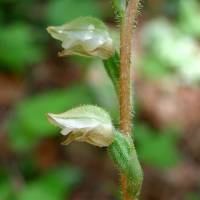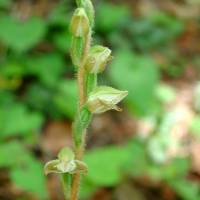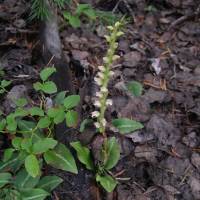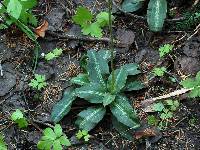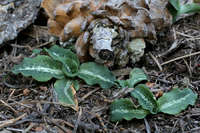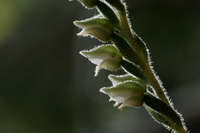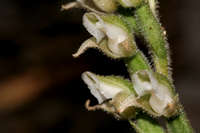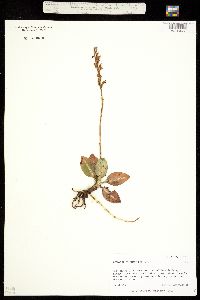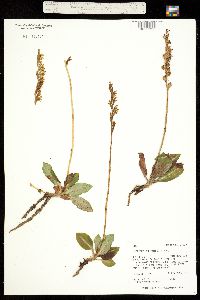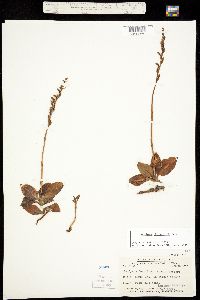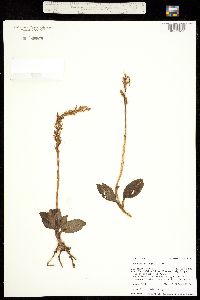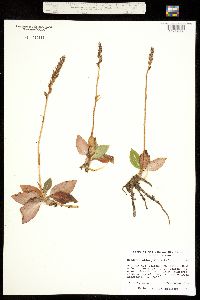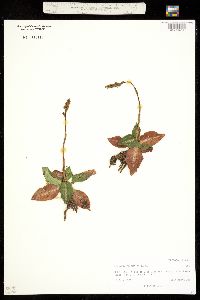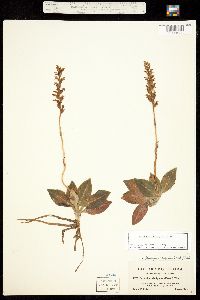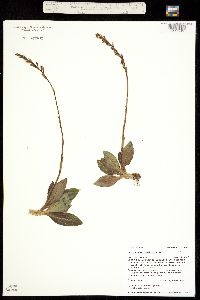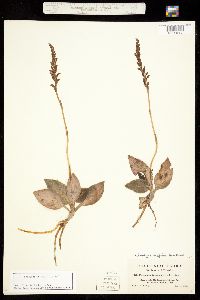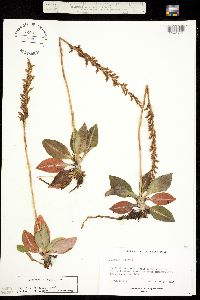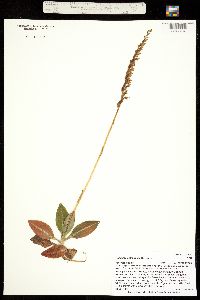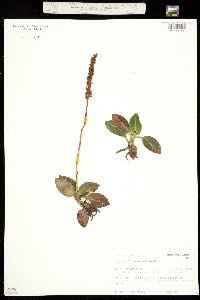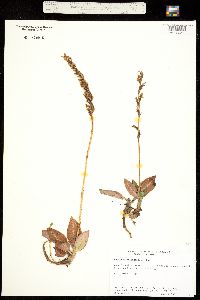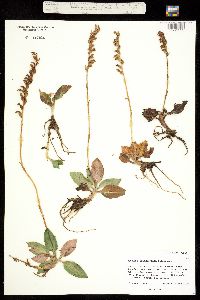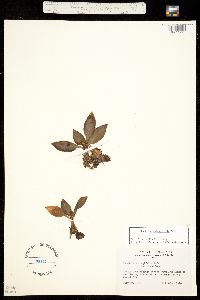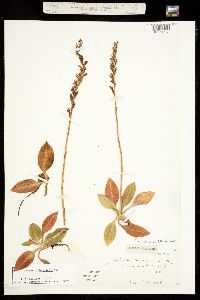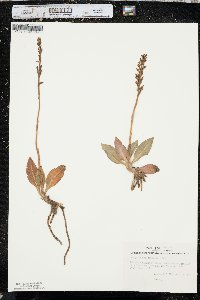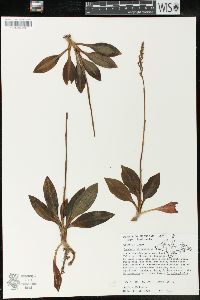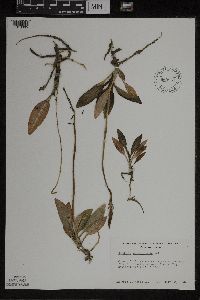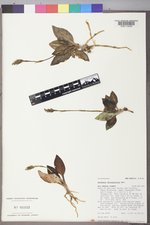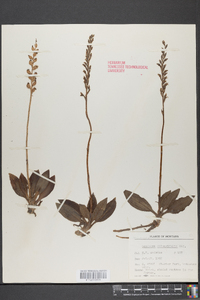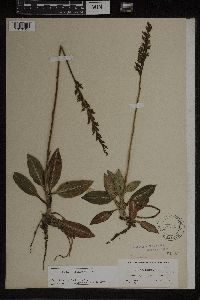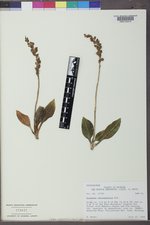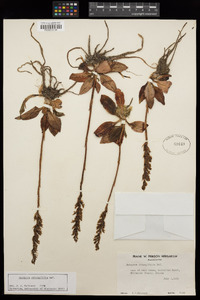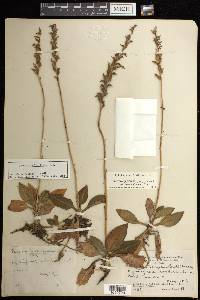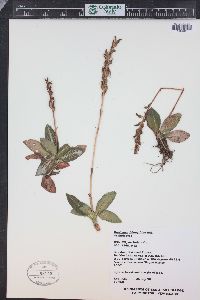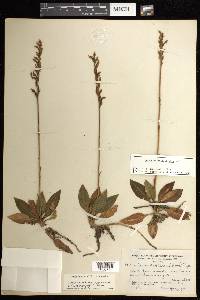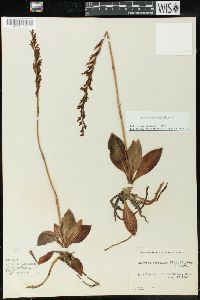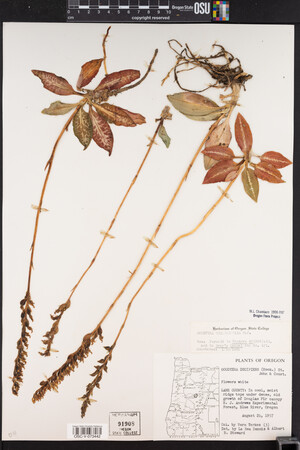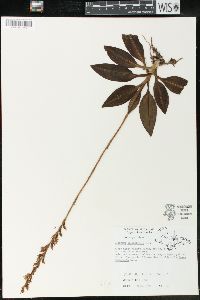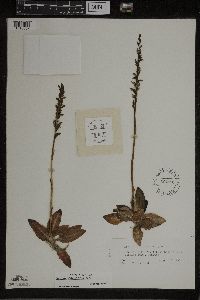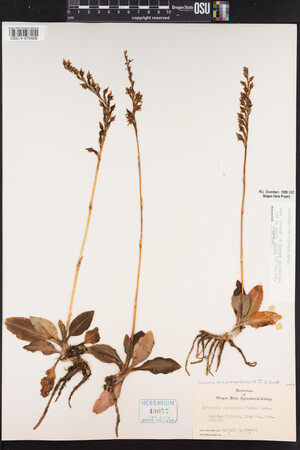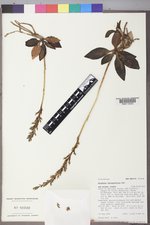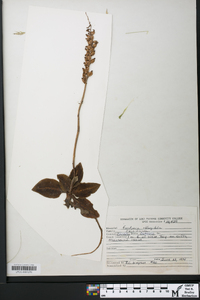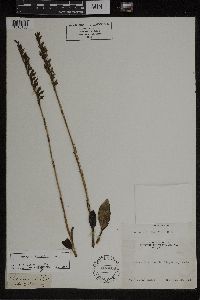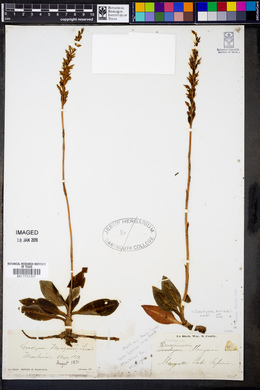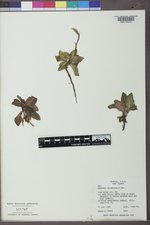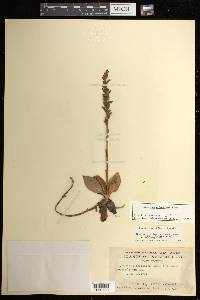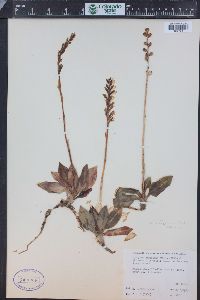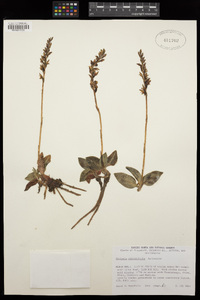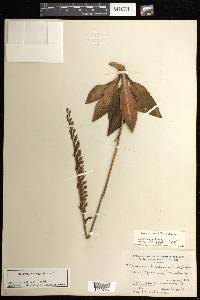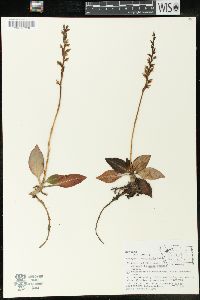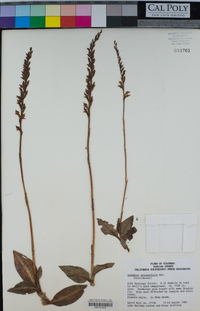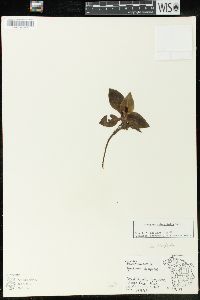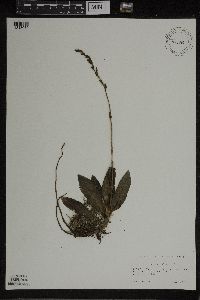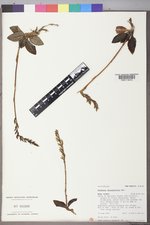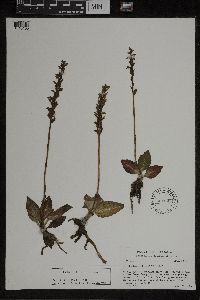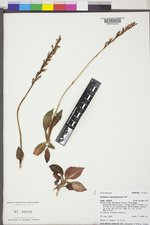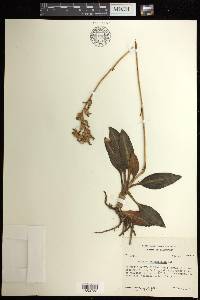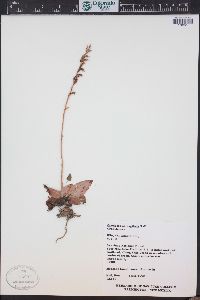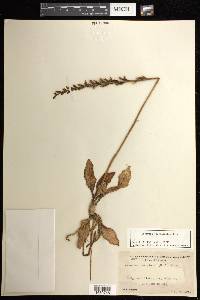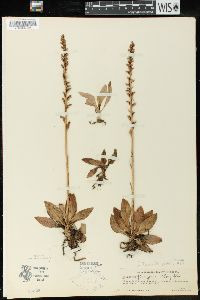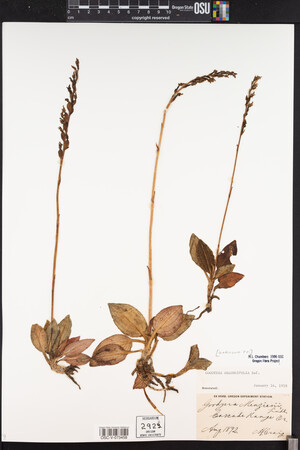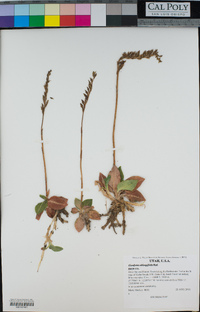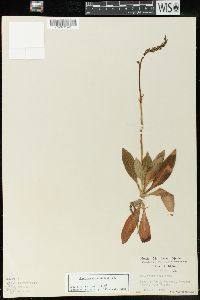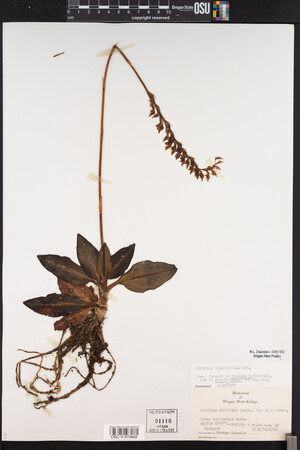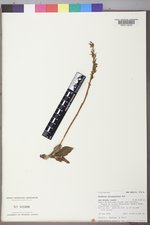Goodyera oblongifolia
|
|
|
|
Family: Orchidaceae
Green-Leaf Rattlesnake-Plantain, more...western rattlesnake plantain, rattlesnake plantain
[Goodyera decipiens (Hook.) F.T. Hubbard, moreGoodyera menziesii , Goodyera oblongifolia var. reticulata Boivin, Peramium decipiens (Hook.) Piper, Peramium menziesii Morong] |
Leaves: blade usually streaked with white only along midrib, sometimes with fine white lateral veins, especially near midrib, narrowly elliptic to ovate, 2.5-10.2 × 1.3-3.5 cm, apex acute. Inflorescences densely to loosely spiraled or secund, 10-48-flowered; peduncle 7-38 cm. Flowers: lateral sepals 5.7-7.8 mm; petals connivent, hood 5-10 mm; lip deeply concave, boat-shaped, 4.9-7.9 × 1.3-3.2 mm, margins upright or involute, apex spreading or slightly recurved, blunt, inner surface with 4 unequal rows of glandular papillae; anther erect, base 1/3-1/2 immersed in cup-shaped clinandrium, apex acuminate; pollinia acuminate; rostellar beak 2-pronged, 2.3-3.6 mm, longer than body of stigma; viscidium elongate. 2n = 30. Flowering mid Jul--mid Sep. Moist or dry coniferous or mixed woods, in East infrequent in cedar swamps, in s Rocky Mountains confined to high elevation spruce-fir forests; 0--3400 m; Alta., B.C., N.B., Nfld. and Labr. (Nfld.), N.S., Ont., Que., Sask.; Alaska, Ariz., Calif., Colo., Idaho, Maine, Mich., Mont., Nebr., N.Mex., Oreg., S.Dak., Utah, Vt., Wash., Wis., Wyo.; Mexico. In eastern North America, Goodyera oblongifolia is restricted to formerly glaciated areas. Plants with leaves white-reticulate on the lateral veins have been described as Goodyera oblongifolia var. reticulata. This segregate, essentially coastal in distribution, occurs from northern California to southeastern Alaska and is less frequent inland from British Columbia to New Mexico and in Michigan and Wisconsin. Because garden transplant experiments (J. A. Calder and R. L. Taylor 1968, vol. 1) have shown that both reticulate and non-reticulate leaves are found within the same clone, varieties are not recognized.
General: Perennial, 10-40 cm tall, densely glandular-pubescent above; plants scapose, the scape with 2-6 membranous glandular-pubescent sheathing bracts; rhizomes creeping; roots fleshy, fibrous. Leaves: Evergreen, basal (forming rosettes), ovate-lanceolate to elliptic-lanceolate, 2.5-10 cm long, 1.3-3.5 cm wide, midrib usually white, or sometimes white lateral veins along either side of the midrib, with white mottling along either side in a vaguely checkerboard-like pattern, margins entire, apex acute; petiole winged. Flowers: Solitary, sometimes 2 on more robust plants, resupinate, showy, usually surpassed by an erect, leaf-like bract; sepals and petals greenish yellow, or more commonly purplish brown; upper sepal lanceolate, 3-4 cm long, twisted, lateral sepals connate or with slight notch at apex; petals narrower and longer than the sepals, twisted; lip strongly pouch-like, much inflated, 2-3 cm long, yellow, often with purplish dots around the orifice; flowers June-July. Fruits: Capsule, about 1 cm long, ribbed. Ecology: Moist habitats, mossy sites, oak and coniferous forests; 1700-3000 m (5500-10000 ft); Apache, Coconino, Gila, Graham, and Greenlee counties; western Canada, northwestern to southwestern U.S. Notes: Goodyera repens (lesser rattlesnake plantain) is distinguished by its generally shorter stature (10-30 cm tall); leaf blades 1-3 cm long, uniformly green or reticulate with white or pale green on lateral veins; lateral sepals 3-6 mm long. It has been reported only in the White Mountains of Apache County. At a glance the basal leaves of Pyrola picta may appear similar to those in Goodyera spp. Pyrola leaves have reticulate venation and coloration, as well as a purplish hue, whereas Goodyera leaves have parallel venation and coloration, and are strictly green. Goodyera oblongifolia survives fires of light to moderate intensity. Editor: Springer et al. 2008 Stout, mostly 2-4 dm; scape with 4-7 bracts; lf-blades lance-ovate to narrowly elliptic, 3-6 cm, usually white only along the midstrip, seldom also on some of the other veins; infl a loose to often rather tight spiral; galea 5-10 (avg 7.5) mm; lip 5-8 (avg 6) mm, with a deeply concave base tapering to a spreading or slightly recurved boat-shaped tip with involute or upright margins; anther acuminate, evidently surpassed by the 2.3-3.6 mm rostellar beak; 2n=30. Dry or moist, hardwood or coniferous forests; P.E.I. and the Gasp顐eninsula to n. Vt.; vicinity of lakes Superior and Huron and n. Lake Michigan; widespread in the w. cordillera. July-Sept. (G. decipiens; Epipactis d.; Peramium d.) Gleason, Henry A. & Cronquist, Arthur J. 1991. Manual of vascular plants of northeastern United States and adjacent Canada. lxxv + 910 pp. ©The New York Botanical Garden. All rights reserved. Used by permission. |
|
|
|

